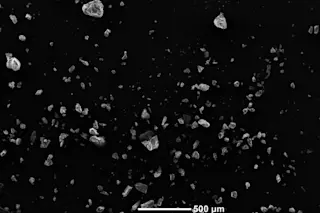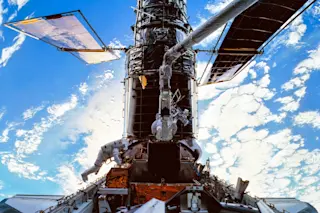Forty-two years after Yuri Gagarin orbited Earth, beating the Americans, China has claimed the bronze medal as the third country to put a human in orbit. On October 15 the Shenzhou 5 (“divine vessel”) capsule blasted off from the Gobi Desert atop a Long March 2F rocket, circled Earth 14 times, and landed in Inner Mongolia. Lieutenant Colonel Yang Liwei, the 38-year-old astronaut, or taikonaut, emerged a national hero.
The Shenzhou 5 is modeled on the Russian Soyuz spacecraft, but Chinese engineers have made substantial improvements. “They didn’t just put it on the blackboard, do a few dry runs, and kick it in the air,” says James Oberg, a spaceflight consultant who spent 22 years at NASA mission control. The Shenzhou has adjustable, electricity-generating solar panels, giving it the potential for weeklong stays in space. And its escape rockets—which allow the capsule to break free in case of a launch emergency—have adjustable thrust, unlike those on the original Soyuz or the American Apollo capsules. “Some of the improvements are subtle, but they’re telling to those who know space engineering,” Oberg says.
Some Western political analysts interpreted Yang Liwei’s adventure as an exercise for future military missions, but Bates Gill, who holds the Freeman Chair in China Studies at the Center for Strategic and International Studies in Washington, D.C., sees a more complex agenda: “The core motivation for the Chinese government is prestige, to send a signal to the world that it’s a rising player. It resonates at home too. The Communist Party believes that this mission legitimizes its claim to being the sole rightful leadership of the Chinese people.”
The government’s goals include more Shenzhou flights, a space station, a visit to the moon, and a manned trip to Mars. Its unstated goals may include a bid to join the International Space Station. The docking ring on the Shenzhou seems compatible with those on the station. “This is far from being a one-off stunt,” Oberg says. “If China wanted to send up a man just to feel good about it, they could have done so 20 years ago.”














